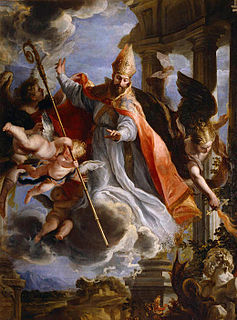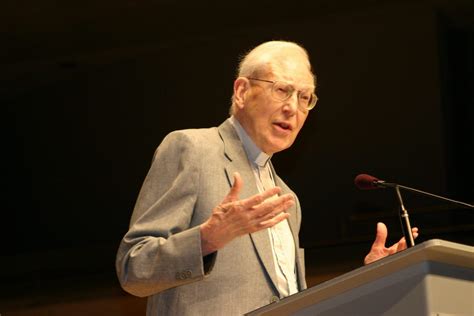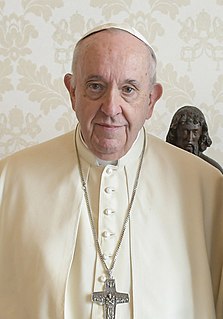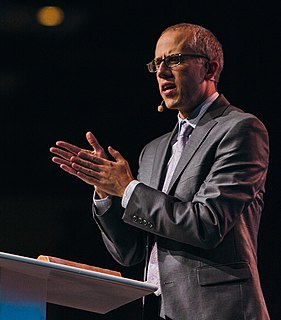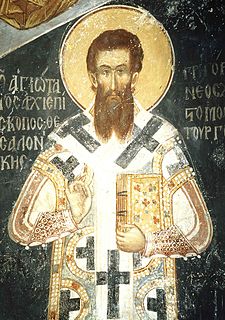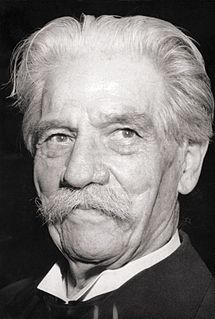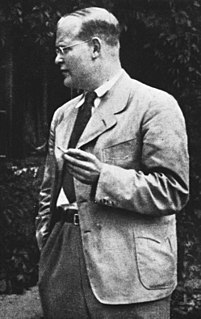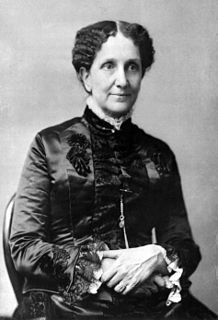A Quote by Philip Schaff
The New Testament presents, in its way, the same union of the divine and human as the person of Christ. In this sense also 'the word became flesh, and dwells among us.'
Related Quotes
"Both Christianity and Islam are logocentric," he told his students, "meaning they are focused on the Word. In Christian tradition, the Word became flesh in the book of John: 'And the Word was made flesh, and He dwelt among us. 'Therefore, it was acceptable to depict the Word as having a human form. In Islamic tradition, however, the Word did not become flesh, and therefore the Word needs to remain in the form of a word … in most cases, calligraphic renderings of the names of the holy figures of Islam."
Has the word propitiation any place in your Christianity? In the faith of the New Testament it is central. The love of God, the taking of human form by the Son, the meaning of the cross, Christ's heavenly intercession, the way of salvation-all are to be explained in terms of itand any explanation from which the thought of propitiation is missing will be incomplete, and indeed actually misleading, by New Testament standards
It's not as if the New Testament writers came along and said, "The culmination of Old Testament books is more books, New Testament books." In some ways they thought instead of the culmination of Old Testament books being Christ himself, the word incarnate as the opening verses of Hebrews 1 put it. In the past God spoke to the fathers by the prophets, but in these last days he has spoken to us by his son and the son is revelation.
Dear friends, let us not forget the flesh of Christ which is in the flesh of refugees: their flesh is the flesh of Christ. It is also your task to direct all the institutions working in the area of forced migration to new forms of co-responsibility. This phenomenon is unfortunately constantly spreading. Hence your task is increasingly demanding in order to promote tangible responses of closeness, journeying with people, taking into account the different local backgrounds.
The beauty of the person of Christ, as represented in the Scripture, consists in things invisible unto the eyes of flesh. They are such as no hand of man can represent or shadow. It is the eye of faith alone that can see this King in his beauty. What else can contemplate on the untreated glories of his divine nature? Can the hand of man represent the union of his natures in the same person, wherein he is peculiarly amiable? What eye can discern the mutual communications of the properties of his different natures in the same person?
If we take seriously the word-flesh Christology of Chalcedon (i.e., the doctrine that Christ is fully human and fully divine) and view Christ as the telos toward which God is drawing the whole of creation, then any view of the sciences that leaves Christ out of the picture must be seen as fundamentally deficient.
If the Word truly became flesh, then God had not only a mother, but also a grandmother, cousins, great-aunts, and weird uncles. If the Word truly dwelt among us, then he was part of a family that, like most, was fairly dysfunctional, a mix of the good and bad, the saintly and the sinful, the glorious and the not so glorious. And this is such good news for us.
The Saviour who flitted before the patriarchs through the fog of the old dispensation, and who spake in time past to the fathers by the prophets, articulate but unseen, is the same Saviour who, on the open heights of the Gospel, and in the abundant daylight of this New Testament, speaks to us. Still all along it is the same Jesus, and that Bible is from beginning to end all of it, the word of Christ.
...if anyone looks with faith at the mystical table and the Bread of Life placed on it, he sees the Person of the Word of God, Who was made flesh for our sake and dwelt among us (John 1:14). If he shows himself a worthy receptacle, he will not only see but become a partaker of Him, receive Him to dwell within him, and be filled with His divine grace.
The recurring theme of all religions is a sympathy, empathy, connection, capacity between the human and the divine - that we were made for union with one another. They might express this through different rituals, doctrines, dogmas, or beliefs, but at the higher levels they're talking about the same goal. And the goal is always union with the divine.



